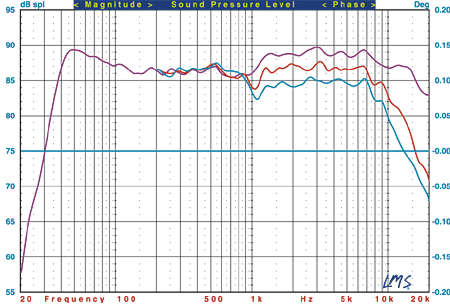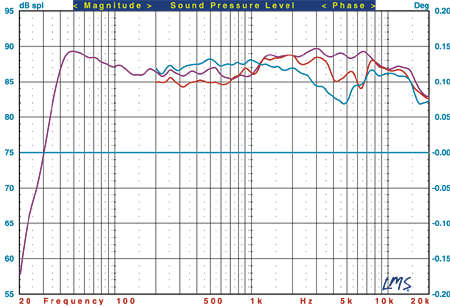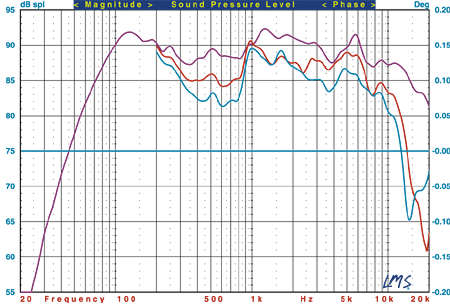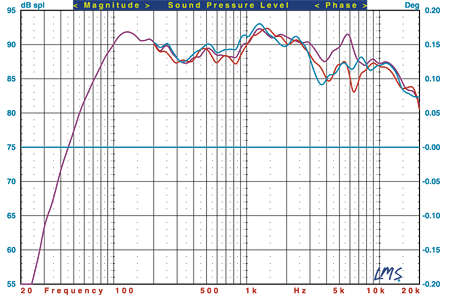Audio Physic Virgo III surround speaker system Measurements
The Virgo III's sensitivity measured approximately 86dB/W/m. Its cabinet is tuned to approximately 45Hz. Its minimum impedance is 3.6ohms at 531Hz. I would rate the nominal impedance at 5ohms. This load should be of average difficulty to drive.
The pseudo-anechoic response of the Virgo at tweeter height, averaged over a 30° forward horizontal angle and combined with the nearfield responses of the woofers and passive radiator, is shown in Fig.1 (violet). The useful bass extends down to approximately 31Hz (–10dB relative to the output at 150Hz). The on-axis average is smooth but elevated to a plateau above 1kHz, suggesting a slightly bright but not peaky sound. Off-axis, the response rolls off smoothly above about 7kHz.

Fig. 1
Fig.2 again shows the Virgo's averaged horizontal front response (violet), plus the vertical responses taken at +15° (red) and –15° (blue) relative to the tweeter. The on-axis response is clearly best; avoid sitting significantly below the tweeter axis.

Fig. 2
The center-channel Avanti's cabinet is tuned to about 70Hz. I would rate its nominal impedance at 6ohms; the minimum impedance was 4.2ohms at 932Hz. The speaker's sensitivity measured approximately 86dB/W/m in the midrange. The Avanti should be of average difficulty to drive.
The measured front horizontal response of the Avanti, taken on the tweeter axis and averaged in the same manner as described above for the
Virgo III, is shown in Fig.3 (violet). The useful bass extension is approximately 56Hz (–10dB relative to the output at 130Hz). The on-axis response is a little erratic but does remain within a +/-3dB window to above 12kHz. The off-axis response is more uneven, showing a noticeable suckout in the region around 500Hz. It isn't as erratic as in most 2-way center channel speakers, but is less impressive than the best we have seen from other 3-way designs.

Fig. 3
The +/-15 vertical off-axis performance of the Avanti (Fig.4) is good, though a small suckout appears around 3-6kHz—near the mid/tweeter crossover region.—Thomas J. Norton

Fig. 4






























































